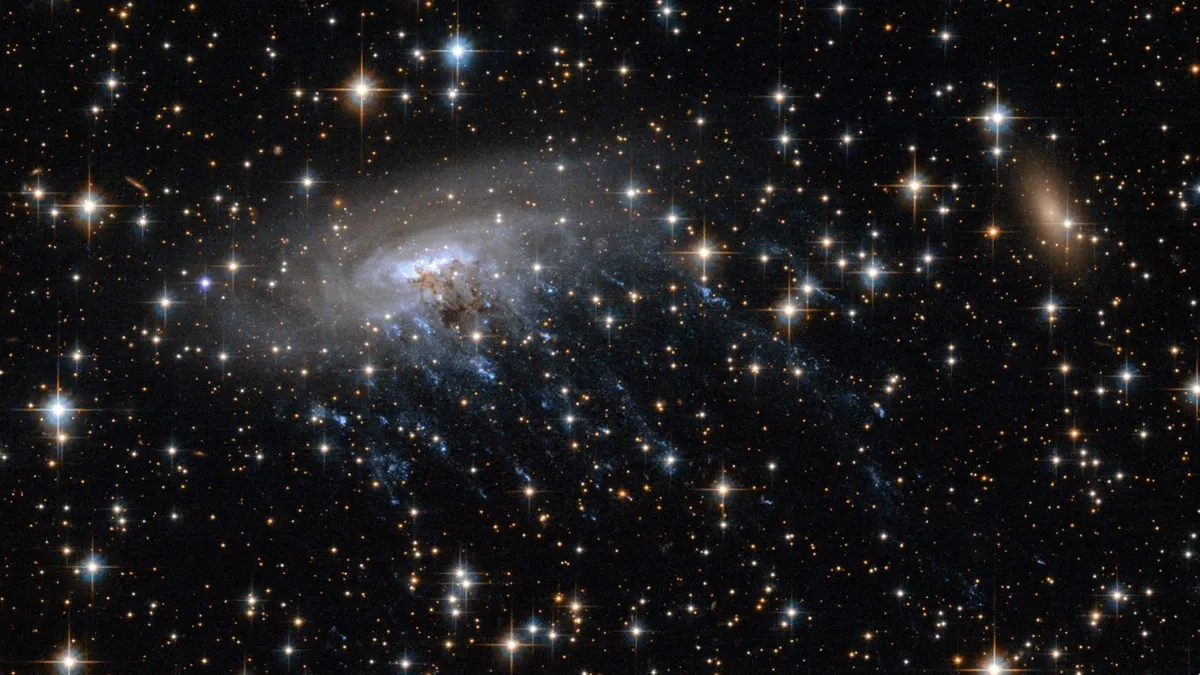
A team of astronomers has made a groundbreaking discovery of what appears to be a new jellyfish galaxy located approximately 12 billion light-years from Earth. This significant finding was made possible through the high-resolution imaging capabilities of the James Webb Space Telescope (JWST). The newly identified galaxy exhibits striking tentacle-like structures of gas and stars extending from one side, characteristics that are typical of jellyfish galaxies. These fascinating celestial formations are known to shed tendrils of star-forming material as they traverse the cosmic ocean.
While further analysis is required to definitively categorize this newfound galaxy as a jellyfish galaxy, the preliminary observations strongly suggest it fits within this unique class. Ian Roberts, an astronomer at Waterloo University, discovered the galaxy while examining images captured by JWST. His team's research findings are currently available on the preprint server arXiv, though they have yet to undergo peer review.
Jellyfish galaxies develop their distinctive tentacle structures through a process known as ram pressure stripping. This phenomenon occurs when a galaxy moves through a dense medium, such as that found in galaxy clusters, resulting in the expulsion of gas and stars from the galaxy. As the galaxy continues its journey, it leaves behind these stellar trails, which can sometimes ignite intense star formation. Although ram pressure stripping is believed to be a common occurrence in nearby galaxies, the jellyfish stage is relatively fleeting on a cosmic timescale, making it a rare sight for astronomers.
The discovery of this jellyfish galaxy offers valuable insights into galaxy evolution and star formation. In densely populated environments, some galaxies experience significantly reduced rates of new star formation. Understanding the factors behind these variations is essential for comprehending how galaxies evolve over time. It is noteworthy that while jellyfish galaxies may produce a surge of new stars in their trailing tentacles, the gas depletion in the galaxy's core can hinder star formation there, as explained by Roberts.
Despite the compelling evidence supporting the jellyfish classification, there are uncertainties regarding the observations. The tentacle-like features may be a visual artifact, as parts of the image were captured using techniques that can create blurriness, introducing a degree of uncertainty in the findings. “Next steps involve further data collection from other telescopes to improve our understanding and confirm whether we have indeed discovered a jellyfish galaxy,” Roberts noted.
With limited existing data on jellyfish galaxies, astronomers are still unsure whether such galaxies are rare at this distance in the universe. “We don’t yet know how common these galaxies are, but discovering more like this will provide critical clues,” Roberts remarked. The research team is eager to enhance their observations, which may ultimately shed light on the nature and prevalence of jellyfish galaxies in the vast cosmos.
The identification of this new jellyfish galaxy not only enriches our understanding of the universe but also highlights the exceptional capabilities of the James Webb Space Telescope. As researchers continue to explore these cosmic wonders, they aim to unlock further secrets of galaxy formation and evolution in the ever-expanding universe.